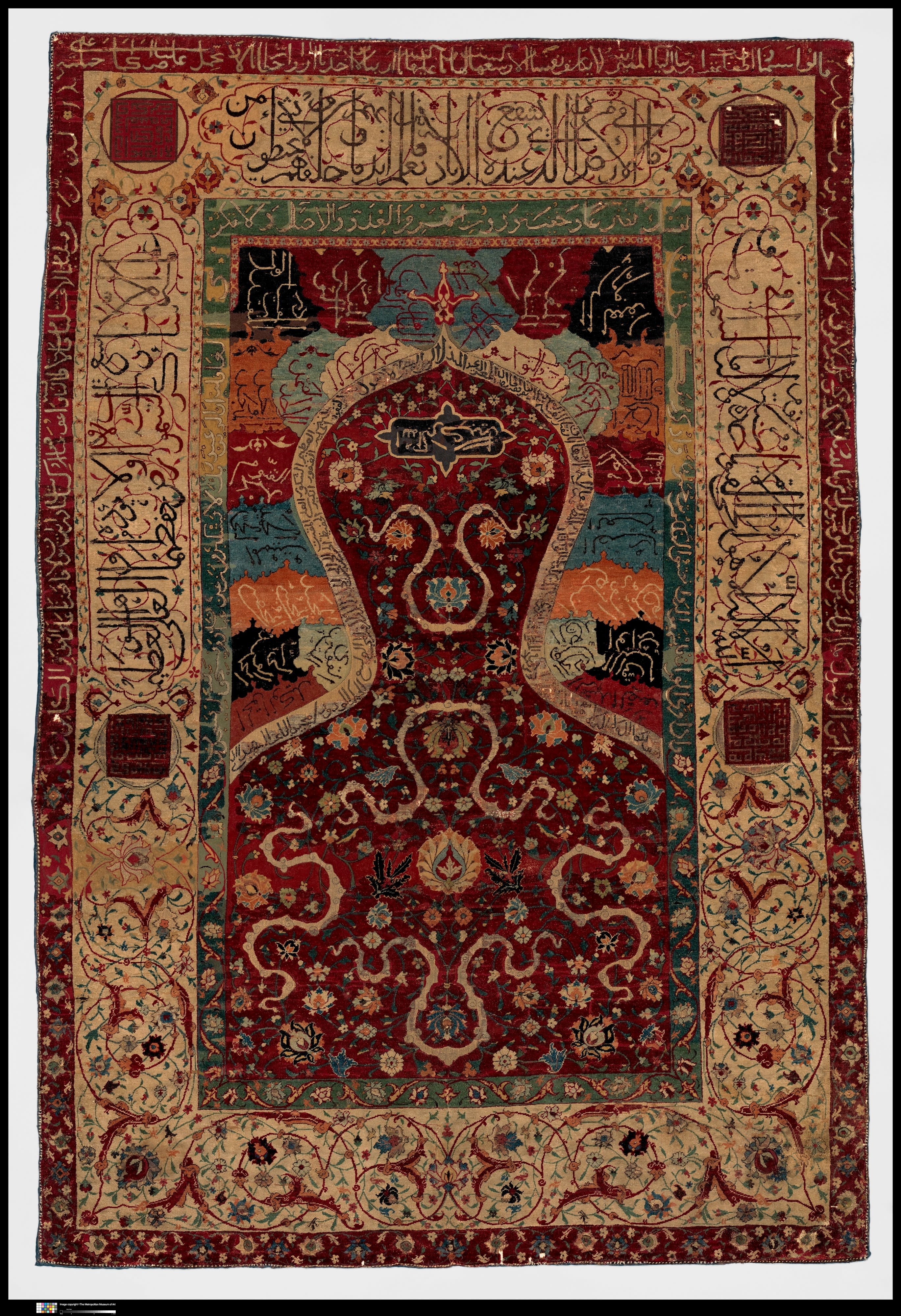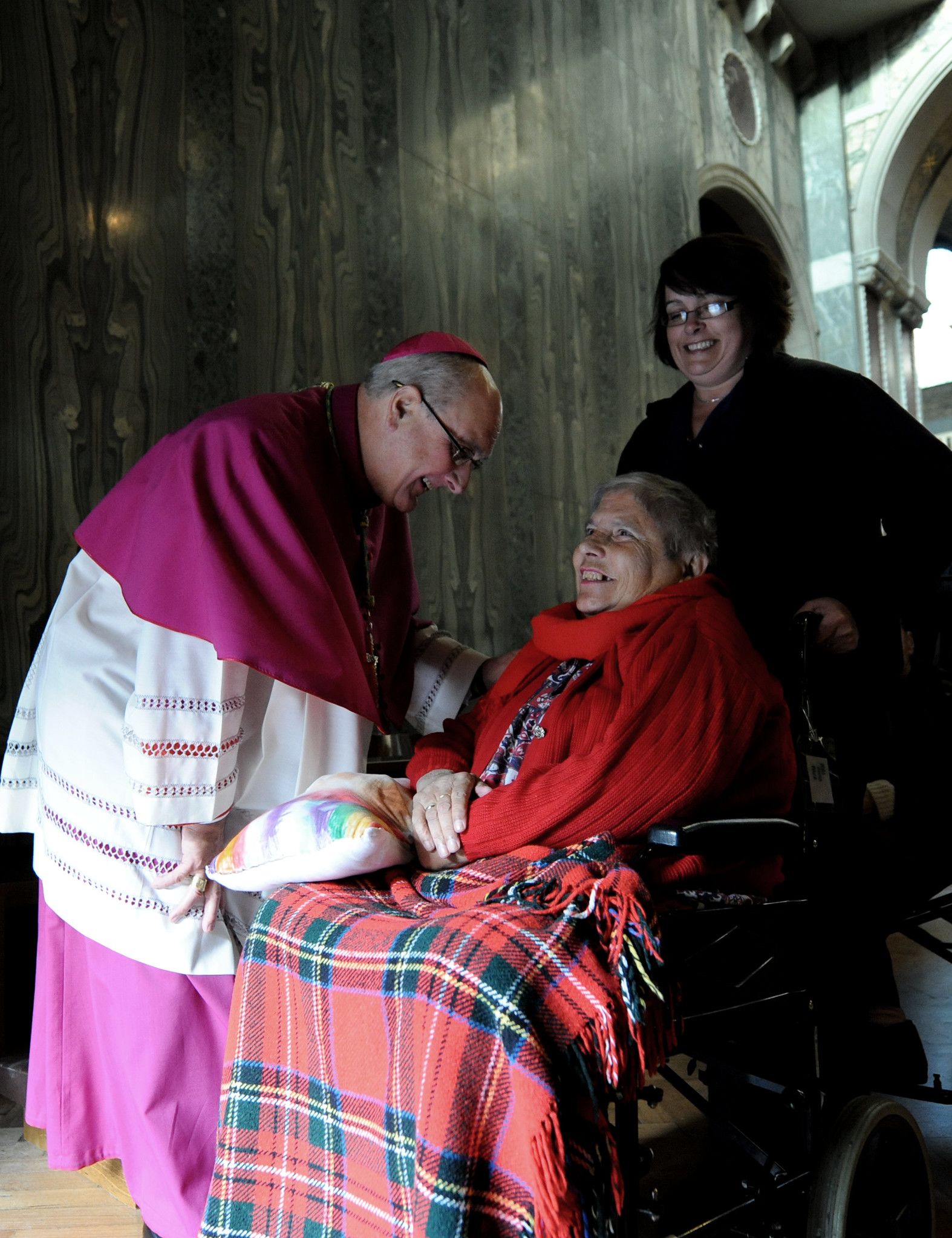Why do some prayers for healing
seem to go unanswered?

Following the death of his wife from cancer, author C. S. Lewis reflected deeply on the matter of unanswered prayer. A Grief Observed was the moving book that emerged from Lewis’s experience of wrestling with God’s unresponsiveness. He wrote:
‘When you are happy [...] you will be — or so it feels— welcomed with open arms. But go to Him when your need is desperate, when all other help is vain, and what do you find? A door slammed in your face, and a sound of bolting and double bolting on the inside. After that, silence.’
Lewis was not alone in his questioning. Sometimes God does heal, but unanswered medical prayers are one of the most common contexts for doubt in relation to science and faith.
This question has preoccupied followers of many faiths, including Christianity, Islam, Buddhism and Judaism.
C.S. Lewis with his wife Joy Gresham-Davidman at their Oxford home, The Kilns, c. 1959. Source: Flickr/levanrami
C.S. Lewis with his wife Joy Gresham-Davidman at their Oxford home, The Kilns, c. 1959. Source: Flickr/levanrami
The suffering of unanswered prayer

The Buddha said: 'I teach but two things, suffering and the end of suffering.'
Unlike theistic traditions, Buddhism does not centre on a personal deity who grants or withholds blessings. Instead, dukkah (Pali word for suffering) is understood as an inherent part of existence, governed by the law of karma and conditioned arising.
In Buddhist thought, prayers and rituals may be practised, but they are not about petitioning a higher power for intervention. Instead, they are forms of cultivating inner transformation, wisdom, and compassion. When healing does not come, it is not seen as divine rejection but as part of the natural cycle of causes and effects, shaped by past actions. The Buddhist response to suffering encourages mindfulness and detachment. It teaches that clinging to expectations, even an expectation of divine intervention, can itself be a source of suffering.
The theologian Jürgen Moltmann (1926-2024) also centres on the reality of suffering, He offers Christians comfort in understanding how deeply Christ enters into the suffering of humanity. Even C. S. Lewis’s sense of abandonment by God was a form of suffering experienced by Jesus in the moment of crucifixion. Moltmann perhaps suggests that the prayer of Christians should not be the avoidance of pain but an entry into the reality of God’s compassionate sharing in it.
Buddhist monks prayer at the feet of a statue of Buddha.
Buddhist monks prayer at the feet of a statue of Buddha.
Making sense of unanswered prayer

Some people have attempted controlled experiments about the ‘power of prayer’. The Victorian scientist Francis Galton set out to examine the effects of regular church prayers for royalty and other public figures. His statistics revealed that, if anything, these prayers had a negative effect on life expectancy. Galton’s experiment betrayed a naive theology, as though God were a sort of vending machine whose action matches human demands.
In Islam, the question of unanswered prayers is often addressed through the concept of du’a (prayer) and qad’r (divine decree). The Qur’an emphasizes that Allah hears all prayers, but responses may not come in the form that one expects or desires.
According to Islamic teachings, there are three possible responses to a prayer: it may be granted immediately, delayed until later, or replaced with something better in this life or the hereafter. The Prophet Muhammad is reported to have said that no sincere prayer goes unanswered, but sometimes what is asked for is not in the person’s best interest. This reflects the Islamic understanding that human knowledge is limited, whereas Allah's knowledge encompasses all possibilities. The pain of unanswered prayers is thus reframed as trust in divine wisdom, though this does not negate the emotional difficulty of experiencing divine silence. Muslims are encouraged to have patience and continue both prayer and seeking medical help.
Christians often speak in similar terms. As well as focusing on Christ’s fellow-suffering with human beings, Moltmann holds that his resurrection gives hope for ultimate healing, in the fullness of time. ‘God weeps with us so that we may one day laugh with him,’ he writes.
Francis Galton, 'Statistical Inquiries into the Efficacy of Prayers', Fortnightly Review, 1st August 1872.
Francis Galton, 'Statistical Inquiries into the Efficacy of Prayers', Fortnightly Review, 1st August 1872.
Islamic Prayer Meeting in University College of North Wales Students' Union, 1962. Source: The National Library of Wales
Islamic Prayer Meeting in University College of North Wales Students' Union, 1962. Source: The National Library of Wales
Why do we pray?

Jewish scripture warns that God should not be ‘put to the test’ through human petition - an injunction that would definitely rule out Galton’s experiment. This does not mean, however, that one cannot pray for those who suffer. The prayer Mi Shebeirach calls healing upon those who need it.
As Rabbi Jonathan Sacks movingly wrote, such prayers have their purpose not in outcome but in relationship:
In Judaism, we do not analyse our faith, we pray it […] In prayer God becomes not a theory but a Presence, not a fact but a mode of relationship. Prayer is where God meets us, in the human heart … in our acknowledged vulnerability.
The Christian theologian Sarah Coakley separates out the phenomena of curing and healing in her discussions of healing and prayer. Sometimes people are granted a deep healing and acceptance, but not cured. Others can be cured, but not healed of the vulnerability and anger that illness can reveal.
Meanwhile, doctors and scientists are increasingly realising that the body is not a machine that can be fixed like a car engine. There are deep processes at work that make the experience of illness and recovery a highly personal journey.
As Coakley argues, we tell stories to make sense of these journeys, whether our own or of those whom we love. These stories, often faith-based, are crucial. They give meaning to our experience of illness, and even change the nature of that experience.
While these religious traditions approach the silence of God in different ways, they each grapple with the emotional reality of suffering and the limits of human understanding. Whether through the Christian compassion of God, the Islamic emphasis on trust in God’s wisdom, or the Buddhist reframing of suffering as an opportunity for inner growth, the question of unanswered prayers remains one of the most profound and difficult aspects of faith.
In the end, the silence that Lewis describes may not be a final rejection but an invitation into deeper reflection and resilience: a transformed relationship with the divine or with reality itself.
Young boy in New York City wearing Jewish prayer shawl, 1911. Source: Library of Congress.
Young boy in New York City wearing Jewish prayer shawl, 1911. Source: Library of Congress.
Anointing of the Sick, Westminster Cathedral, 2009. Source: Flickr/Catholic Church (England and Wales)
Anointing of the Sick, Westminster Cathedral, 2009. Source: Flickr/Catholic Church (England and Wales)
Questions for discussion
- What are your experiences of praying for healing, or being prayed for?
- What do you think is the difference between being cured and being healed?
- How can we spiritually process prayers that seem to go unanswered?
Further reading
C. S. Lewis, A Grief Observed. Several editions. 2015 Faber edition includes contributions from Hilary Mantel, Jessica Martin, Jenna Bailey, Rowan Williams, Kate Saunders, Francis Spufford and Maureen Freely.
David Wilkinson, When I Pray, What Does God Do? (London: Monarch, 2015)
‘Praying for Healing’, Heart and Soul, BBC World Service, 2 May 2025 https://www.bbc.co.uk/programmes/w3ct6vnq
Sarah Coakley and Martin Laird, 'The Problem of Negative "Thoughts" in Prayer According to the Desert Tradition: Approaching Sickness through the Lens of Deepened Prayer'. Podcast.
To Download a free text version of this article to use with your congregation click below
We are gathering feedback on this story please contribute to our survey.







